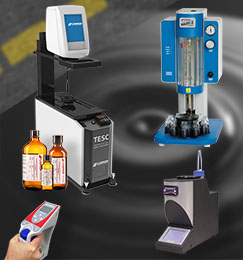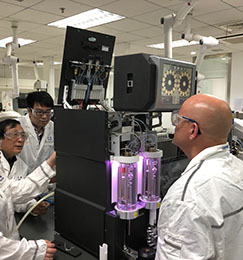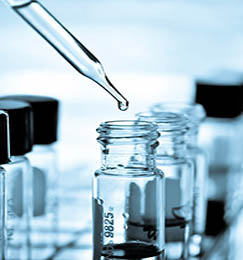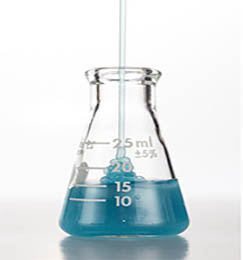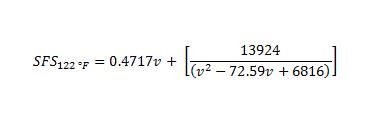VISCOSITY & RHEOLOGY CLASSROOM
The viscosity of a fluid is a measure of its resistance to gradual deformation by shear stress or tensile stress. It is a measure of the resistance of flow due to internal friction when one layer of fluid is caused to move in relationship to another layer.
Viscosity is a property of the fluid which opposes the relative motion between the two surfaces of the fluid that are moving at different velocities. In simple terms, viscosity means friction between the molecules of fluid. When the fluid is forced through a tube, the particles which compose the fluid generally move more quickly near the tube's axis and more slowly near its walls; therefore some stress (such as a pressure difference between the two ends of the tube) is needed to overcome the friction between particle layers to keep the fluid moving. For a given velocity pattern, the stress required is proportional to the fluid's viscosity.
Measuring Kinematic Viscosity
The most common method for measuring kinematic viscosity is the use of a gravimetric capillary (Figure 1) that is usually temperature controlled at 40 °C and 100 °C for multigrade oils, and 40 °C for single grade oils. Generally, measurements made using capillary viscometers rely on the relation between time and viscosity.
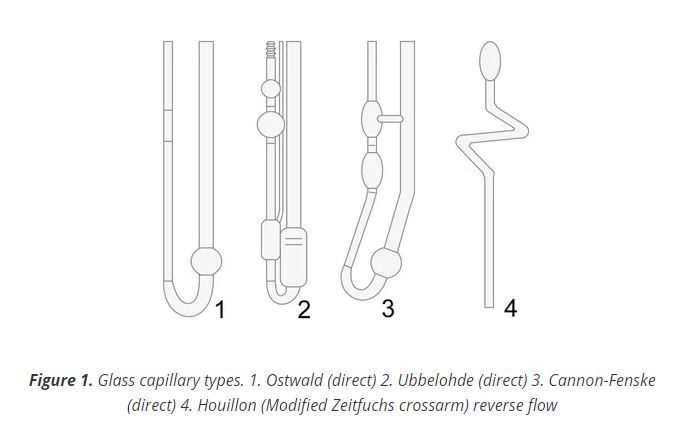
The more viscous an oil, then the longer it takes to flow via a capillary under the influence of gravity alone. There are several standardized capillaries in use. Most laboratory instruments use glass capillaries or "tubes". These manual glass viscometers require the use of a Constant Temperature Bath in order to stabilize the sample temperature for measurement.
DEFINITIONS
Absolute Viscosity: The tangential force per unit area of two parallel planes at unit distance apart when the space between them is filled with a fluid and one plane moves with unit velocity in its own plane relative to the other. Also known as coefficient of viscosity.
Apparent Viscosity: The value obtained by applying the instrumental equations used in obtaining the viscosity of a Newtonian fluid to viscometer measurements of a non-Newtonian fluid
Dilute Solution Viscosity: The viscosity of a dilute solution of a polymer, measured under prescribed conditions, is an indication of the molecular weight of the polymer and can be used to calculate the degree of polymerization.
Kinematic Viscosity: The absolute viscosity of a fluid divided by the density of the fluid. Also known as the coefficient of kinematic viscosity. Measured in stokes (St) or centistokes (cSt).
Intrinsic Viscosity ([η]): The ratio of a solution’s specific viscosity to the concentration of the solute, extrapolated to zero concentration. Intrinsic viscosity reflects the capability of a polymer in solution to enhance the viscosity of the solution.
ARTICLES & WHITE PAPERS
Our scientists contribute to industry knowledge by authoring papers in various technical publications. For articles and white papers pertaining to General Viscosity,
visit here.
In addition to technical articles and white papers, our application scientists are available to discuss your particular application needs and help you find solutions to your most pressing testing issues.
EQUATIONS:
Basic Viscosity
Shear Stress / Shear Rate = Viscosity
General
a = 9.801 m/s²
Dynamic Viscosity
1 poise = 1 g/cm·s = 0.1 N·s/m² = 0.1 Pa·s
1 cP = 1 mPa·s
SI Unit Conversion
1 Pascal = 1 Newton / m²
Kinematic Viscosity
1 Stoke = 1 cm²/s = 100 mm²/s
1 cSt = 1 mm²/s
Conversion from Rotational to Kinematic Viscosity
Poise / Density = Stoke
g/cm·s / g/cm3 = cm²/s
Conversion from Kinematic to Rotational Viscosity
Stoke * Density = Poise
cm²/s * g/cm3 = g/cm·s
Conversion from Kinematic to Saybolt Viscosity
Krebs Unit (for Thomas®-Stormer Viscometer)
Over the viscosity range of 200 to 2100 mPa·s (cP)
ln(KU) = 1.1187 + 0.8542*ln(0.1938v + 36) - 0.0443(ln(0.1938v +36))²
Over the viscosity range of 2100 to 5000 mPa·s (cP)
ln(KU) = 1.8118 + 0.596*ln(0.1938v + 36) - 0.0206(ln(0.1938v +36))²
Where KU is the viscosity in Krebs Units at 25°C
and v is the viscosity in mPa·s (cP) at 25°C


